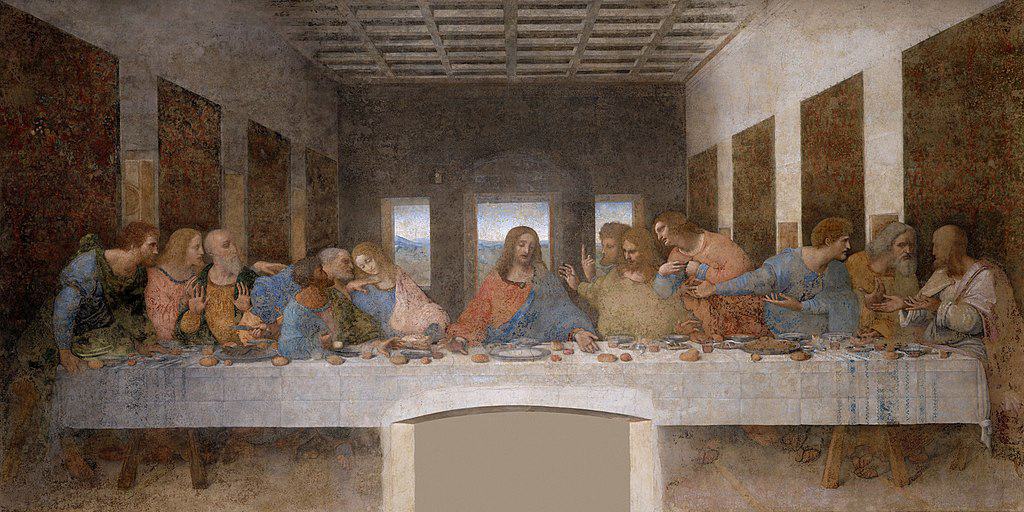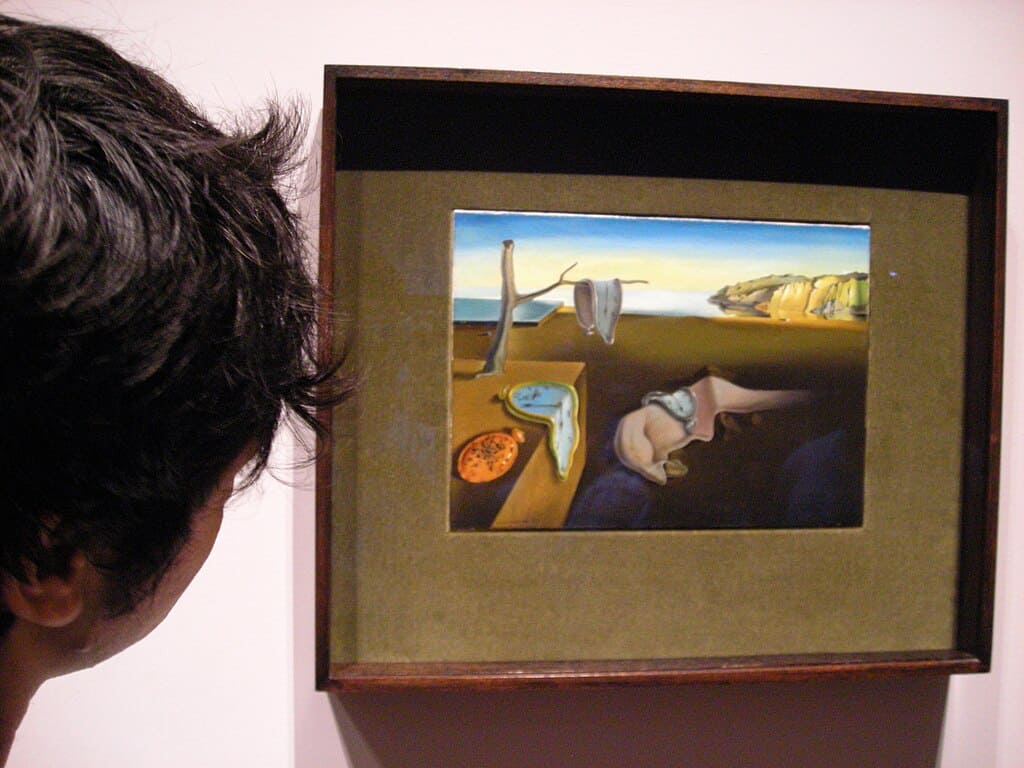Naming the greatest of anything is a contentious undertaking, and determining a list of the greatest paintings you should know about is no exception. Whether it’s art from the Renaissance or modern works, art says volumes about the time and place it was created, and its influence has made a lasting impact on other endeavors such as mass media and motion pictures.
24/7 Tempo has created a list of the greatest paintings you should know about. We compiled a list based on information from sources such as websites of museums, such as the Louvre, Prado, the Uffizi galleries, the Metropolitan Museum of Art, and the National Gallery of Art, and sources such as Italianrenaissance.org, Art in Context, Britannica, and the Smithsonian magazine. We gleaned information from as many sources as possible to develop a consensus as to what constitutes the greatest paintings you should know about. 24/7 Tempo weighed the importance of the work based on its historical importance as well as its significance in pioneering an art form. We appreciate the fact that such a listing endeavor is by its very nature a subjective exercise and that this is by no means a comprehensive list.
Early art subjects were almost entirely religious in nature (“Madonna and Child, With the Blessing Christ”). During the Renaissance, artists were supported by benefactors such as the Medici family, who did so more for political gain than altruism. Later, with the rise of the middle class, artists such as Flemish painters depicted families of merchants and bankers (“Girl with a Pearl Earring”).
As we moved into the 19th century, Impressionists drew on nature (“Water Lilies”) and the leisurely pastimes of the working and middle classes (“A Sunday Afternoon on the Island of La Grande Jatte”).
Some art was political in nature (“Coronation of Napoleon,” “The Third of May 1808 in Madrid” ). Théodore Géricault’s “The Raft of Medusa,” depicting the desperation and suffering of survivors of a ship running aground, caused controversy in France over the indifference to the fate of sailors.
From at least the 16th century, art has been created to shock and astonish, whose examples include “The Triumph of Death,” “The Scream,” and “Guernica.”
Modern art of painters such as Jackson Pollock and Jasper Johns challenged the idea of what art is and took the art form in a new direction and birthed movements such as the drip method and cubism. (Also See 25 Irreplaceable Cultural Treasures Destroyed by War.)
Madonna and Child, With the Blessing Christ [middle panel] (About 1340)

- Artist: Pietro Lorenzetti
- Current location: National Gallery of Art, Washington, D.C.
Pietro Lorenzetti, a painter from Siena, Italy, depicted Mary, the mother of Jesus, holding the infant Christ eating cherries, a popular motif of the time. It is believed Lorenzetti was commissioned by a church in Pisa to do this painting.
The Garden of Earthly Delights (1490-1500)
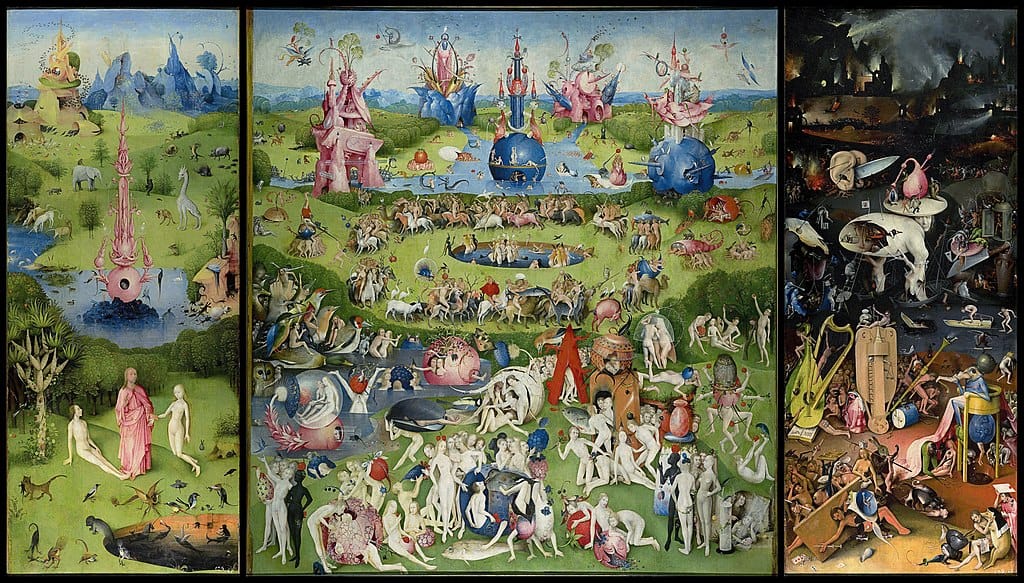
- Artist: Hiëronymus Bosch
- Current location: The Prado, Madrid
The singular vision of Hiëronymus Bosch was realized in “The Garden of Earthly Delights,” a triptych depicting his view of humankind. The Garden of Eden is on the left, hell on the right, and humanity in the center moving toward sin. The Dutch painter’s fantastical style was widely imitated and very influential on the Surrealist movement in the 20th century.
The Last Supper (1495-98)

- Artist: Leonardo da Vinci
- Current location: Santa Maria delle Grazie, Milan
“The Last Supper,” subject of countless imitations and memes, is one of art’s iconic treasures. The work of the matchless Leonard da Vinci presents Jesus Christ attending the final meal before his crucifixion. The painting is much bigger than you think — a fresco 15 feet high and 28.9 feet wide. It survived target practice from Napoleon’s soldiers and Allied bombing during World War II. Its current location, Santa Maria delle Grazie in Milan, is its original location.
Mona Lisa (1503-1519)

- Artist: Leonardo da Vinci
- Current location: The Louvre, Paris
The “Mona Lisa” is synonymous with the Renaissance and is the most famous, discussed, and visited painting in the world. More than 6 million people view Leonardo da Vinci’s masterpiece at the Louvre in Paris every year. Napoleon once owned the painting, which is now the property of France. It has been kept behind bullet-proof glass following several attempts to deface it.
Las Meninas (1656)
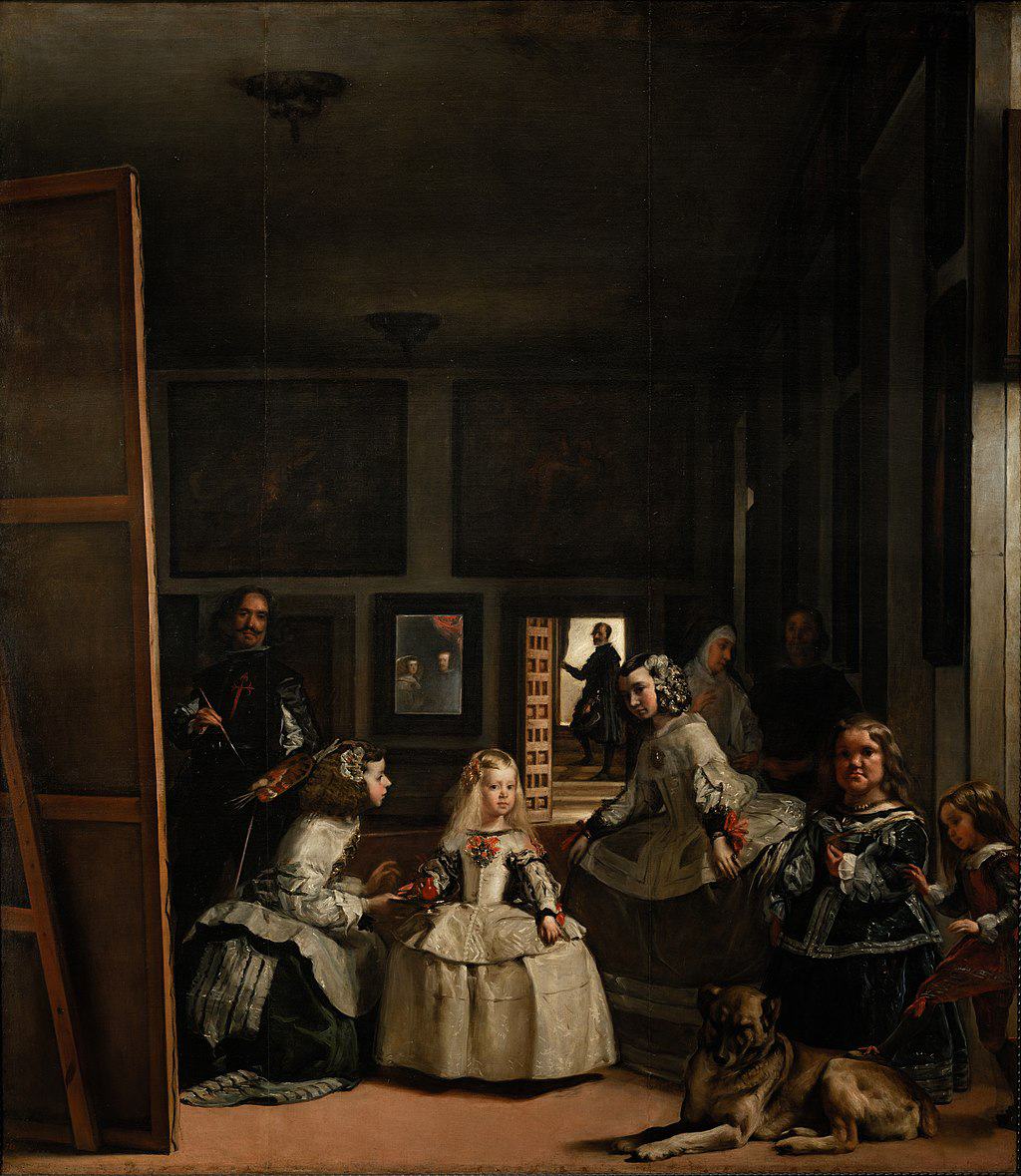
- Artist: Diego Velázquez
- Current location: The Prado, Madrid
Diego Velázquez’s “Las Meninas” is a much-discussed work among art historians because of its realistic depiction of daily life that is shown in rich colors as well as the complexity of meanings throughout the painting. Several significant Spanish figures of the time are shown in the painting. The Spanish master painted himself into the work at the easel in his studio.
Girl with a Pearl Earring (1665)
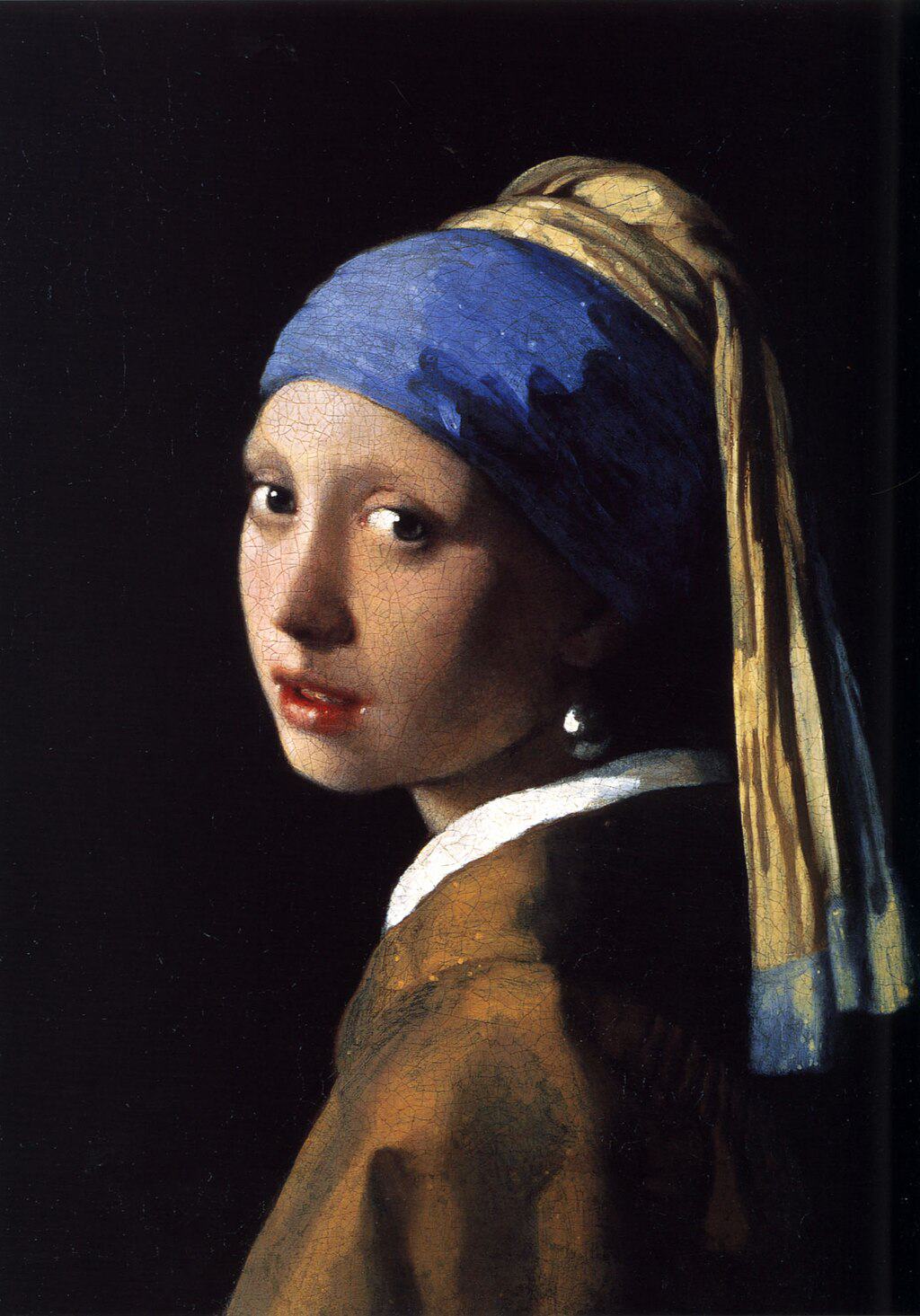
- Artist: Johannes Vermeer
- Current location: Mauritshuis, The Hague
Johannes Vermeer is one of the most significant artists of the Dutch Baroque period, famous for his use of color and light to vividly depict everyday life. His “Girl with a Pearl Earring” has been frequently compared to the “Mona Lisa.” Vermeer’s work is of a slightly startled girl wearing a turban and a pearl looking at the viewer. In popular culture, the painting inspired an historical novel by Tracy Chevalier that became a 2003 film starring Scarlett Johansson. The girl was the star of a 3D advertisement for Coca-Cola at São Paulo’s Guarulhos International Airport in 2023.
Coronation of Napoleon (1807)

- Artist: Jacques-Louis David
- Current location: The Louvre, Paris
Jacques-Louis David’s “Coronation of Napoleon” has been called one of the first examples of art as propaganda. Napoleon, clad like a latter-day Roman emperor, is shown crowning his wife Josephine empress, after having taken the emperor’s crown from Pope Pius VII and crowning himself emperor at Notre-Dame Cathedral. David made sure the painting was imposing. It is 20 feet tall and 33 feet wide.
The Great Wave off Kanagawa (1830-31)

- Artist: Katsushika Hokusai
- Current location: Metropolitan Museum of Art, New York City
Reprints of Katsushika Hokusai’s iconic “The Great Wave off Kanagawa” can be found in countless college dorm rooms. It was one of the first great artworks to be reprinted. The painting has become synonymous with Japanese art as boats are shown slicing through the craggy white-topped waves.
The Dance Class (1873)
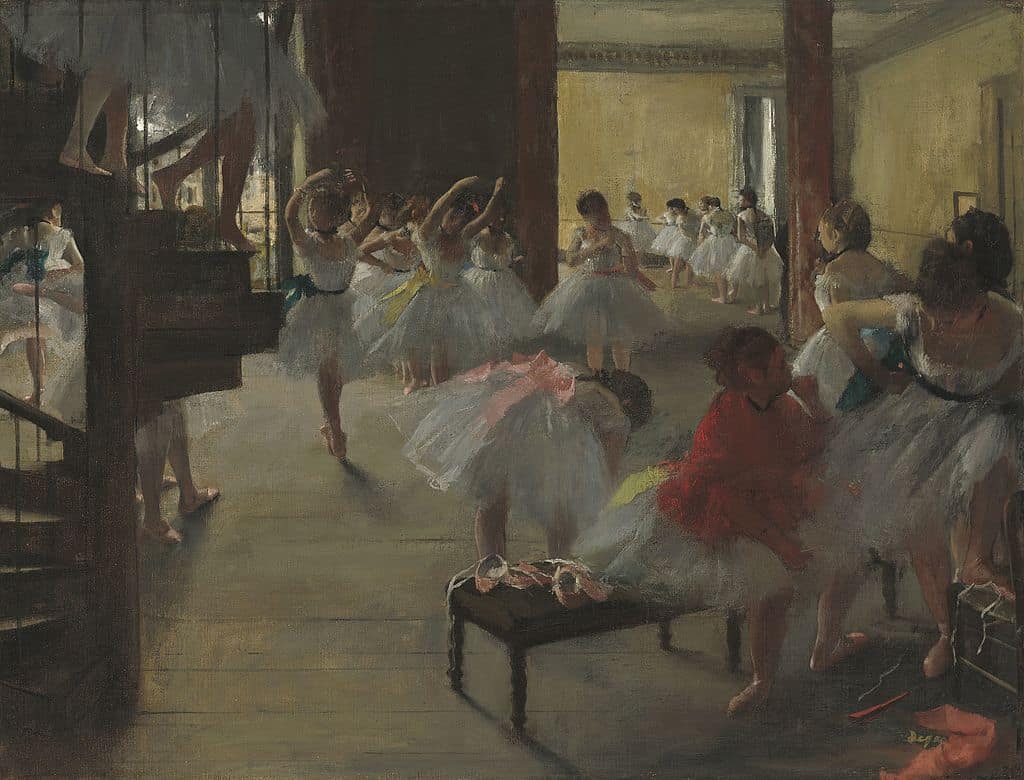
- Artist: Edgar Degas
- Current location: Metropolitan Museum of Art, New York City
Renowned impressionist painter Edgar Degas lent his singular style to everyday life in Paris in the 19th century. Among his most famous works is “The Dance Class,” presenting ballerinas and their mothers attending a class held by famed ballet instructor Jules Perrot at the Paris Opéra. A twin of this painting, “The Ballet Class,” resides at the Musée d’Orsay in Paris.
A Sunday Afternoon on the Island of La Grande Jatte (1884-86)

- Artist: Georges Seurat
- Current location: The Art Institute of Chicago
“A Sunday Afternoon on the Island of La Grande Jatte” is among the most parodied of the great works of art. Georges Seurat’s masterpiece is one of the finest examples of the pointillist technique employed by Impressionist artists. The work is located at the Art Institute of Chicago and appeared in a scene from the 1986 film comedy “Ferris Bueller’s Day Off.”
The Starry Night (1889)
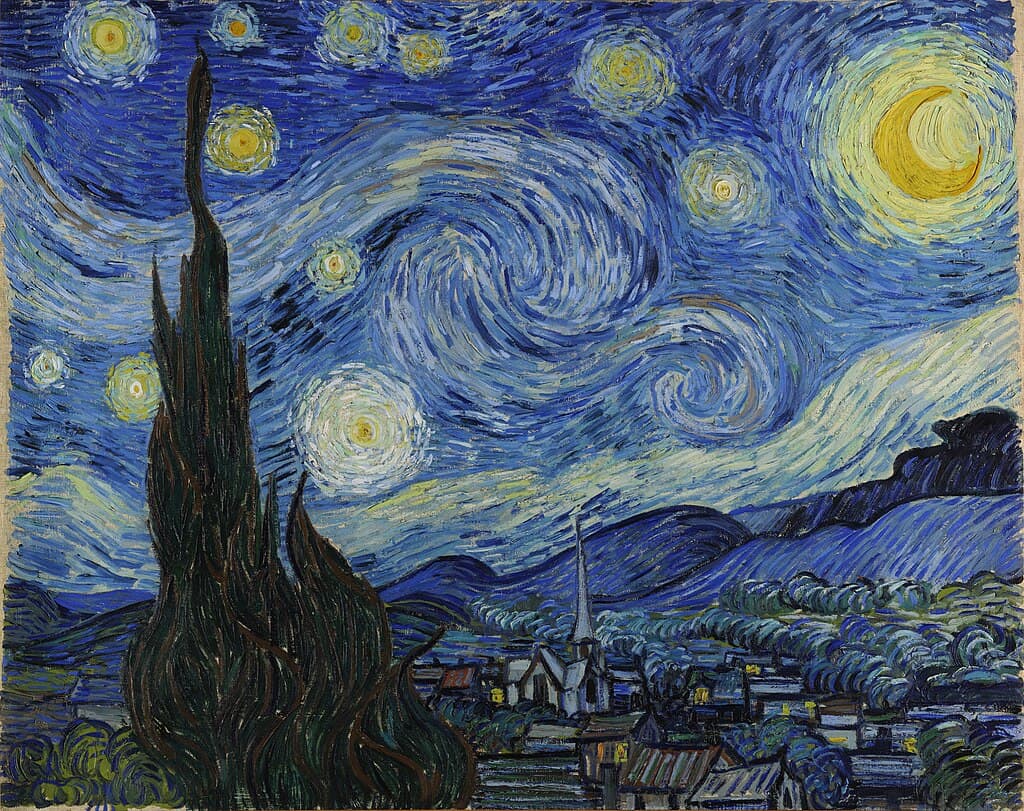
- Artist: Vincent Van Gogh
- Current location: Museum of Modern Art, New York City
The teeming crowds attending the Vincent Van Gogh immersive experiences in major American cities in recent years are a testament to his appeal. “The Starry Night” might be his most famous painting and is another frequently reproduced work of art. It was created by Van Gogh at an asylum in Saint-Remy where he had committed himself in 1889. His torment is evident in the intensity of the brush strokes.
The Boating Party (1893)
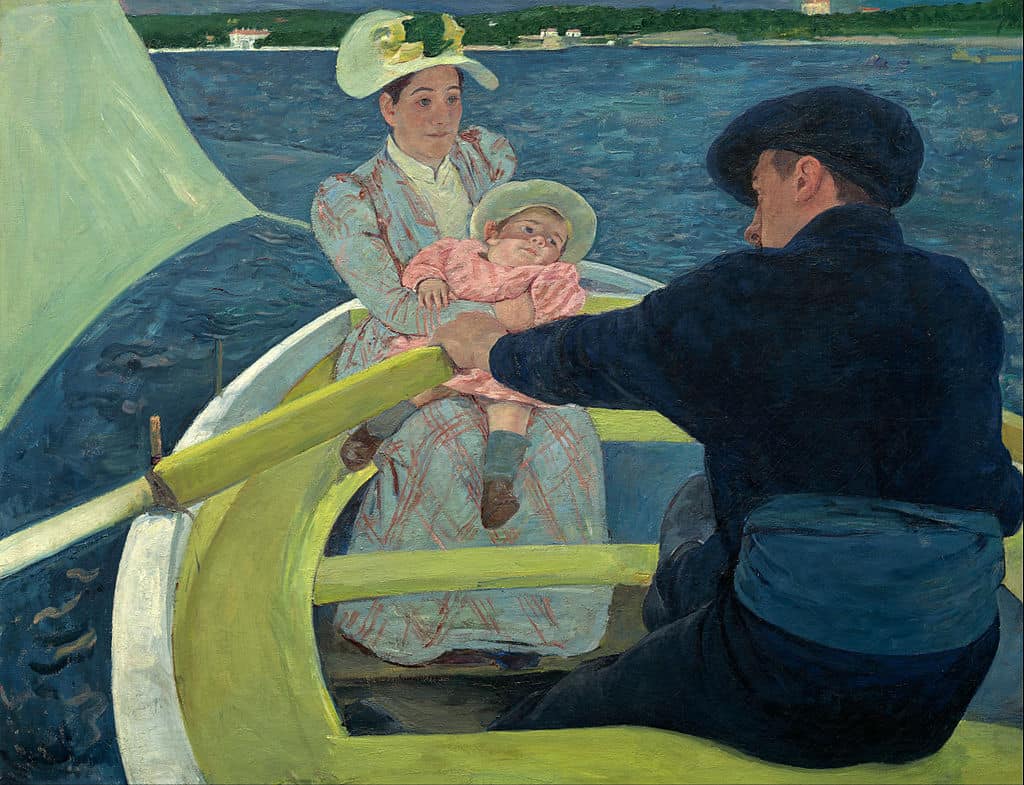
- Artist: Mary Cassatt
- Current location: National Gallery of Art, Washington, D.C.
“The Boating Party” is one of the first influential paintings rendered by an American female artist. Mary Cassatt, impassioned advocate for women’s rights, was a contemporary of French Impressionists Edgar Degas and Camille Pissarro, who were colleagues and teachers. Cassatt was greatly influenced by the Japan Print exhibition in Paris in 1890. “The Boating Party” was honored with a U.S. postage stamp.
The Scream (1893)
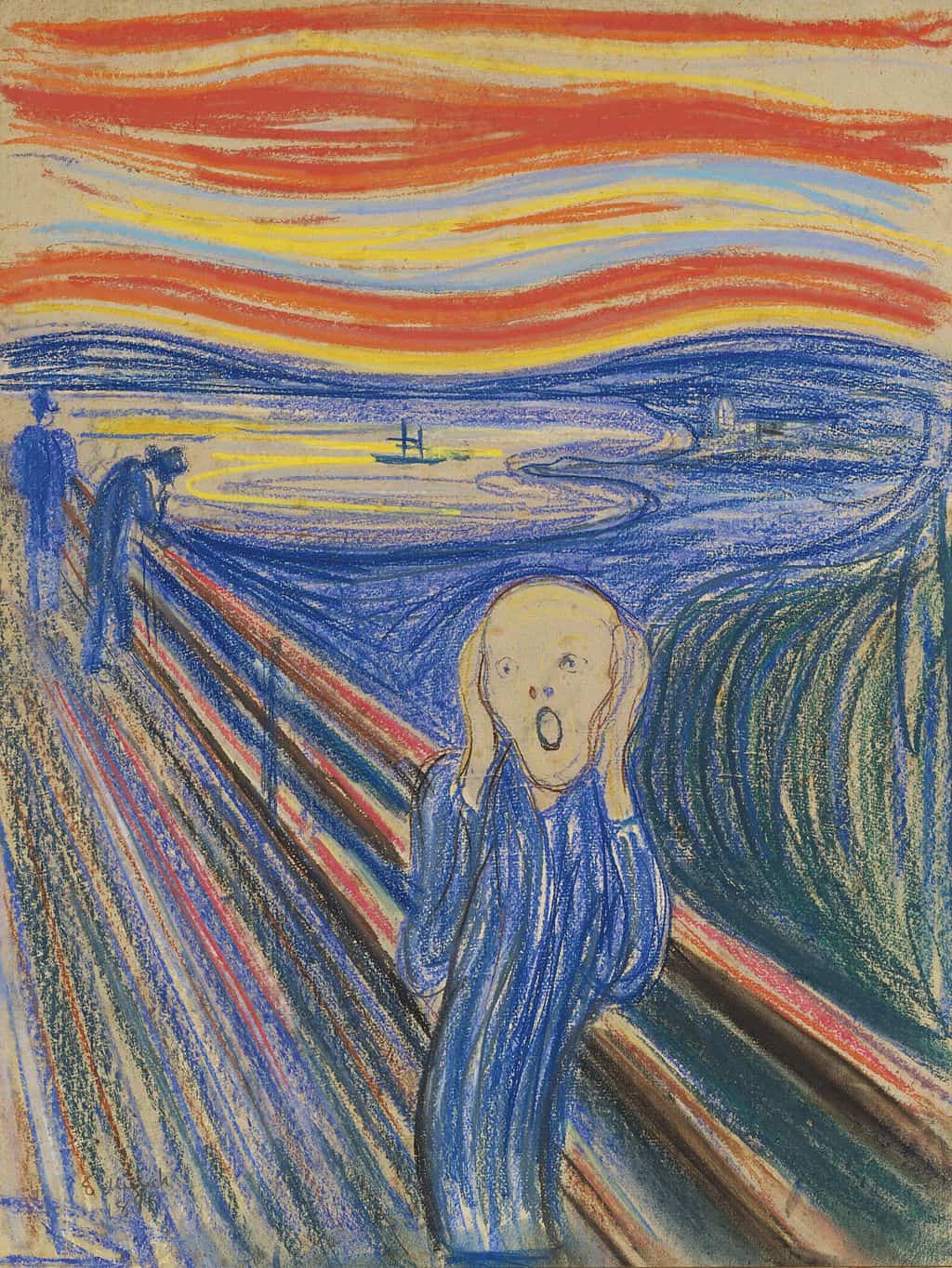
- Artist: Edvart Munch
- Current location: National Museum, Oslo
Few paintings have been parodied or reproduced more than Edvart Munch’s “The Scream.” Munch, a Norwegian artist, was walking with friends one evening in 1892 and as the sun set, the sky’s blood-red appearance suggested to him a scream searing through nature. A year later, he painted his masterpiece, which resides in Oslo’s National Museum, an institution that has devoted an entire room to his works.
Water Lilies (1896-1926)
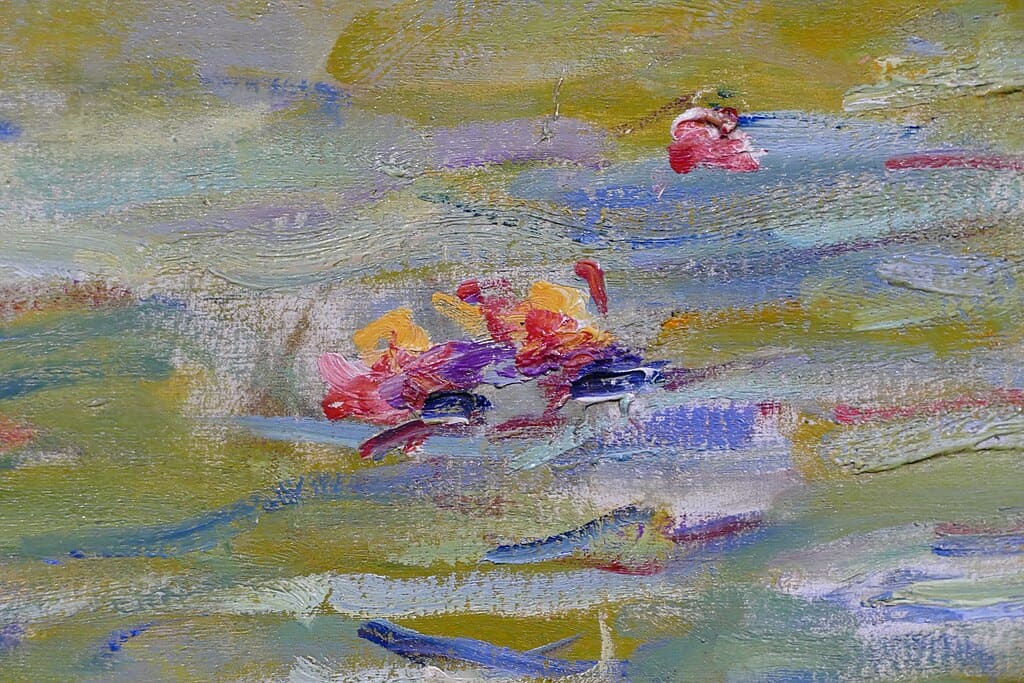
- Artist: Claude Monet
- Current location: Musée de l’Orangerie, Paris
Claude Monet’s body of work is synonymous with Impressionism. His depictions of nature are hung in museums all over the world. Among his most famous works is a series of paintings titled “Water Lilies.” There are 250 studies that were created by Monet at his garden in Giverny. In the 1920s the French government constructed two oval rooms in Paris’s Musee de l’Orangerie for the “Water Lilies” murals. Unfortunately for Monet, he did not live long enough to see them.
Still Life With Milk Jug and Fruit (1900)
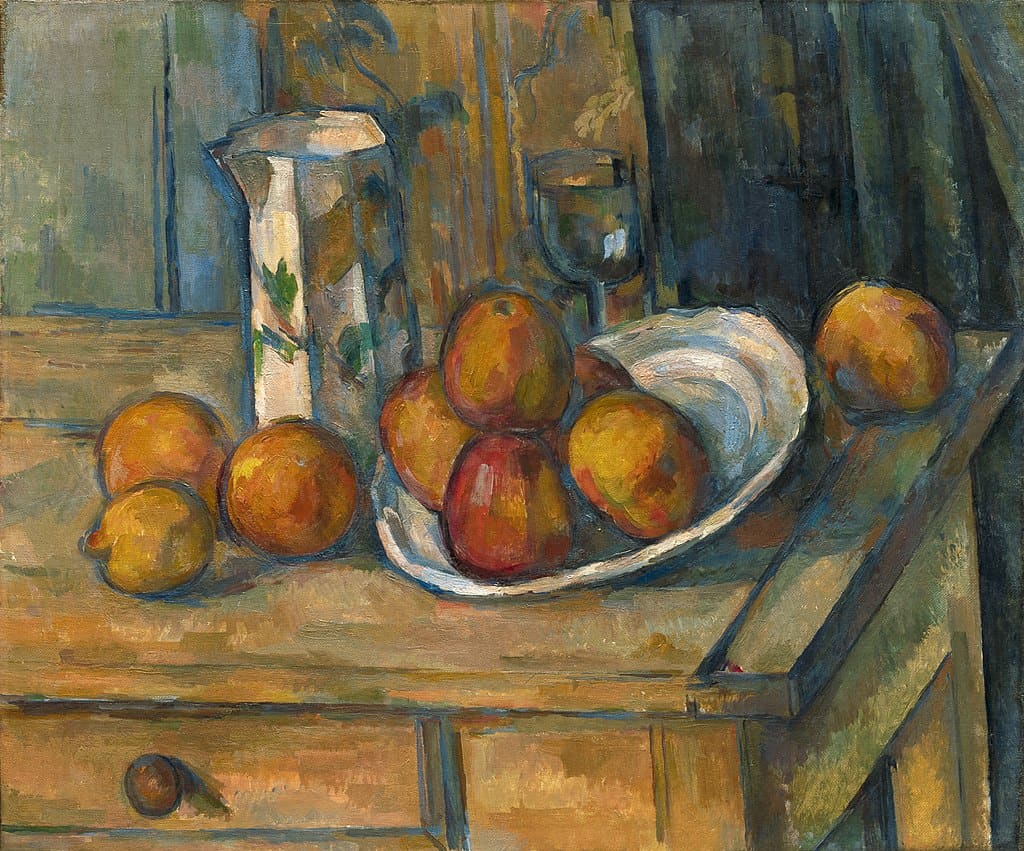
- Artist: Paul Cézanne
- Current location: National Gallery of Art, Washington, D.C.
Paul Cézanne sought to break away from Impressionism and paved the way for the Cubist movement in the 20th century. The flattening of forms and shapes in his works prefigured modern art. Cézanne spent most of his time painting in Provence. He is most famous for his still lifes, and his “Still Life With Milk Jug and Fruit” is among his most famous.
The Persistence of Memory (1931)
- Artist: Salvatore Dali
- Current location: Museum of Modern Art, New York City
One of modern art’s most recognizable works is Salvatore Dali’s “The Persistence of Memory,” the most celebrated of his “dream photographs.” Dali’s surrealist masterpiece shows clocks melting on the landscape of his native Catalonia in Spain. Such was Dali’s influence on the culture of the 20th century that he and filmmaker Alfred Hitchcock collaborated on the famous dream sequence in the thriller “Spellbound.”
Guernica (1937)
- Artist: Pablo Picasso
- Current location: Museo Reina Sofía, Madrid
“Guernica” is one of the most influential works of art in art history. The title of the work is from the Spanish city bombed by German dive bombers on the side of the Spanish fascists during the Spanish Civil War in the late 1930s and depicts the suffering and devastation in that city. The painting was moved to the Metropolitan Museum of Modern Art in New York during World War II for its safety. The artist asked that “Guernica” remain at MOMA until democracy was restored in Spain. “Guernica” returned to Spain in 1981, six years after the death of Spanish dictator Francisco Franco and eight years after Picasso died.
